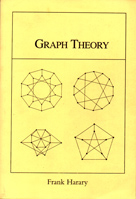A uniquely -colorable
graph
is a graph with chromatic number
such that every
-coloring gives the same partition of the vertices of
(Cartwright and Harary 1968; Harary et al. 1969; Ballobás 1978; Harary
1994, pp. 137-140; Chao 2001; Brešar et al. 2023). Equivalently,
a graph with chromatic number
is uniquely colorable iff its vertices
can be partitioned into
independent vertex sets
in exactly one way. It is important to note that this definition does not
take the action of a graph automorphism group
into account when considering uniqueness, so any symmetries in the graph itself are
ignored (i.e., the vertices are considered "fixed").
Examples of uniquely colorable classes of graphs include complete graphs ,
connected bipartite
graphs,
-partite
graphs, and trees. k-trees
are
-uniquely
colorable (Xu 1990).
The empty graphs (for
) are the only disconnected
graphs that are uniquely colorable.
Chartrand and Geller (1969) proved that there are no uniquely 5-colorable planar graphs, and Fowler (1998) characterized uniquely 4-colorable planar graphs as exactly the planar 3-trees (cf. Brešar et al. 2023, who omit the "planar" restriction on 3-trees).
The numbers of simple uniquely colorable graphs on , 2, ... nodes are 1, 2, 3, 6, 11, 35, 134, 1183, 21319,
... (OEIS A369223).
Uniquely -colorable
graphs are
-connected
(Chartrand and Geller 1969).
Uniquely -colorable
graphs satisfy
|
(1)
|
where
is the minimum vertex degree (Brešar
et al. 2023).
Ballobás (1978) showed that a sufficient condition for a graph
on
vertices and
edges to be uniquely
-colorable is that the inequality
|
(2)
|
hold. The condition is however not necessary, i.e., there exist graphs that are uniquely colorable but for which the inequality fails to hold.
Truszczyński (1984) and Xu (1990) gave a necessary condition for unique colorability as satisfaction of the inequality
|
(3)
|
A graph is therefore not uniquely colorable if the inequality fails to hold, while a graph may or may not be uniquely colorable if it does hold.
Chao (2001) proved that there exist uniquely -colorable graphs with
and
vertices for every integer
, and that there exist two uniquely
-colorable graphs
and
vertices that are chromatically
equivalent.

Harary et al. (1969) and Harary (1994, cover and p. 139) gave two graphs that were incorrectly identified as uniquely colorable (as can be seen by the existence of distinct partitions of vertices by color in the illustrations above). The first was corrected in Harary et al. (1970) through the addition of edges on the left, top, and right.
A different definition of unique colorability considers two colorings to be equivalent if there exists a composition of graph
automorphism and color exchange that transforms one coloring into the other (Osterweil
1974, Chia 1996, Brešar et al. 2023). To distinguish this case from
the more usual definition in which the action of the graph
automorphism group has been dropped, Chia (1996) uses the term "uniquely
colorable under the action of the automorphism group," while Brešar et
al. (2023) term such graphs -iso-unique. Some graphs may be uniquely colorable under the
action of their automorphism group based on the symmetry of the graph alone, i.e.,
the graph automorphism group itself acts
to exchange colors in all possible ways without the need to take color exchange into
account explicitly. Examples include the Sierpiński
gasket graphs and their generalizations to odd dimensions (D. Knuth, pers.
comm., May 1, 2022).